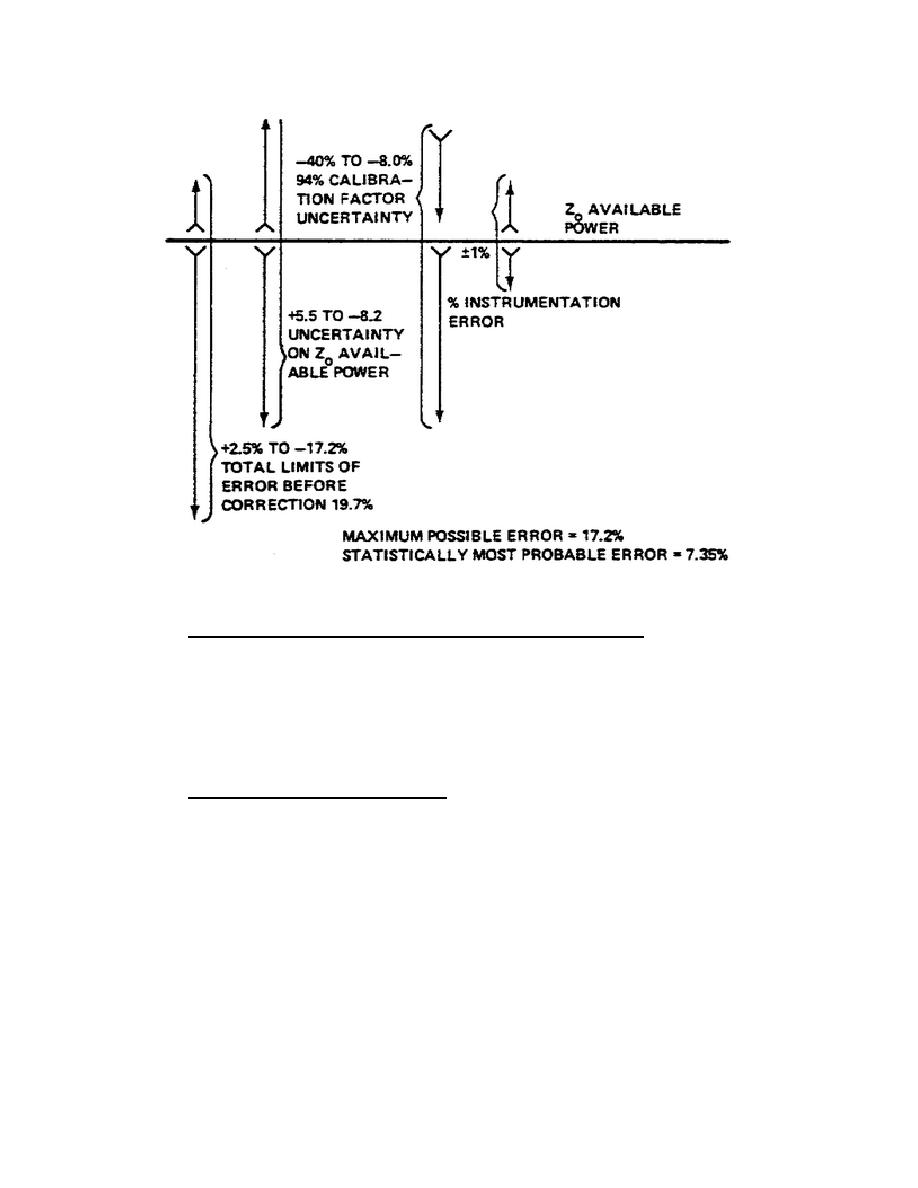
MM0474
Figure 6.
Limits of Error Before Correction.
(8) RF Losses and DC-to-Microwave Substitution Error. RF losses account
for the power entering the thermistor mount but not dissipated in the detection
thermistor element. Such losses may be in the walls of a waveguide mount, the
center conductor of a coaxial mount, capacitor dielectric, poor connections
within the mount, or due to radiation. DC-to-microwave substitution error is
caused by the difference in heating effects of the substituted audio bias of DC
power and the RF power. RF losses and DC-to-microwave substitution error are
generally combined for the simplicity of analysis.
(9) Thermoelectric Effect Error. A mild thermocouple voltage exists at
each point of contact where the connecting wires join to the thermistor
elements.
Each thermocouple creates a DC voltage.
Thus, two thermocouple
voltages of opposite relative polarity are formed, one at each junction to each
thermistor element.
(10) Ideally, each thermocouple voltage would be equal in magnitude so
that they cancel with no resultant effect on the accuracy of power measurement.
In practice, however, each point of contact does not have identical
thermocouple characteristics, and in addition, the temperatures at each
junction may not be the same.
These differences cause an incomplete
cancellation of the thermoelectric voltages, resulting in a voltage that causes
a thermoelectric effect error. The magnitude of the error is important when
making DC substitution measurements on the 0.1 mW; 0.03 mW, and 0.01 mW ranges.
On other
19


 Previous Page
Previous Page
